Specific software
Ship motion analysis
AIS data analysis tool
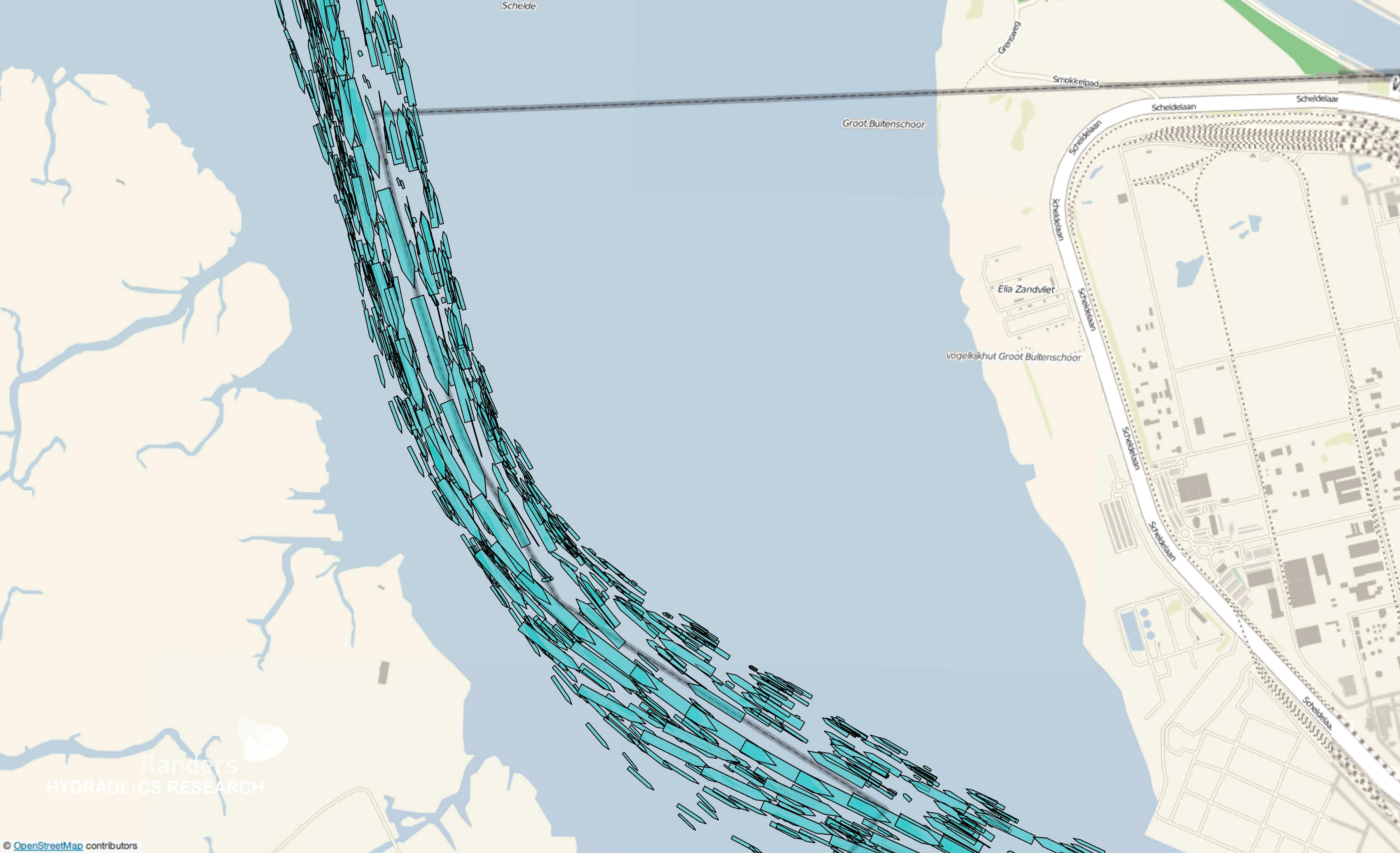
Flanders Hydraulics Research (FHR) has developed a tool to analyze AIS data in a flexible and effective way. AIS data contain useful information that can for example be used to analyze shipping traffic for operational purposes or to analyze specific manoeuvres at particular locations. However, the mere size of the data files are a real challenge to work with.
The AIS data analysis tool therefore sorts vessel data based on the passing times of predefined entry lines. The data can then be filtered based on different parameters, such as ship characteristics (dimensions, type) or voyage characteristics (destination, in- or outbound sailing, draught, time). For visualisation purposes the tool also provides export options in different formats, which can be opened with GIS-viewers.
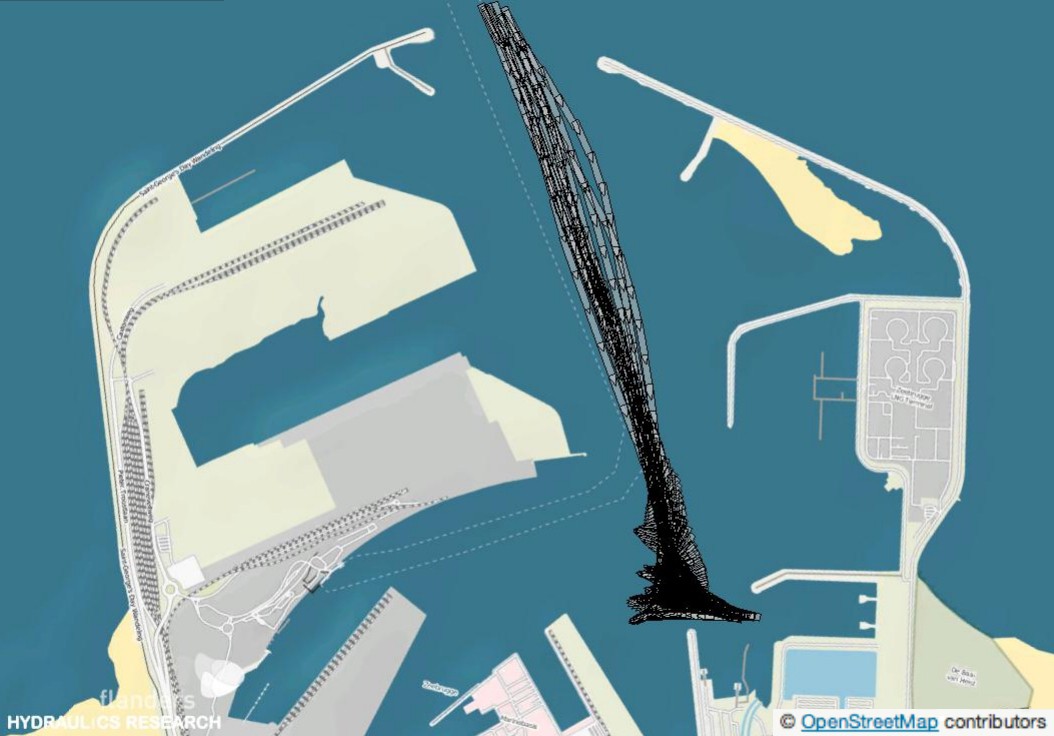
On behalf of the Common Nautical Authority, the Knowledge Centre used the tool to analyze historic ship speeds for different ship types and destinations on the Western Scheldt. AIS data of 2012 and 2013 were supplied by the Scheldt Radar Chain. In order to reduce the dataset, the study was limited to vessels longer than 200 m and wider than 30 m. The study provided insight in the influence of ship type, draught, tidal conditions and operational boundary conditions on actual ship speed for inbound and outbound manoeuvres to Flushing Sloehaven and Antwerp.
The AIS analysis tool was also applied for several other projects. One example is the analysis of passing distances and vessel speeds close to a wave gauge on the Western Scheldt in order to correlate water level changes with ship waves. Another example is a replay function of ship trajectories between two entry lines in the port of Zeebrugge in order to evaluate realistic manoeuvring speeds and rate of turn for a selection of vessels.
Computational Fluid Dynamics (CFD)
FINETM/Marine
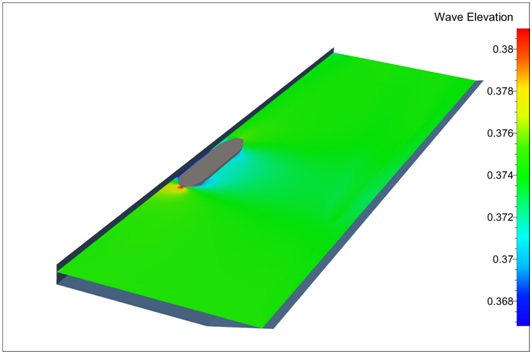
CFD offers the opportunity to study specific hydrodynamic problems which are difficult or impossible to study by experimental means. In addition, due to the relative short computing times, CFD can be used as a practical and cost-effective alternative for one-off experimental research. With decreasing costs of computing facilities and improvements in numerical algorithms, more complicated configurations can be tackled by CFD.
However , shallow water conditions and confined environments are still a challenge. The interaction with a nearby bottom or wall leads to a highly complex flow, which requires a much finer mesh in certain critical areas and thus longer computing times.
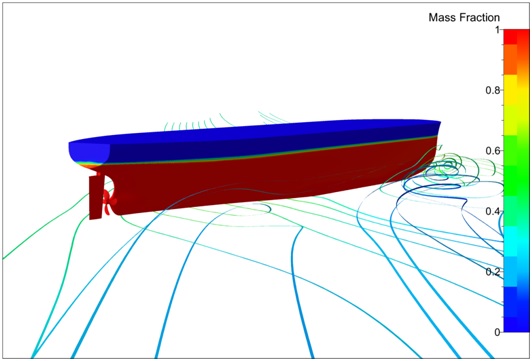
The software package FINETM/Marine, which is developed by NUMECA, computes the turbulent air-water flow around a vessel with the Reynolds-Averaged Navier-Stokes equations. Initial research focused on recreating experimental cases that were investigated in the towing tank at Flanders Hydraulics Research, such as ship-bank interaction and ship-ship interaction. Currently, research focuses on the behaviour in shallow water of ships with a drift angle of 30 degrees. The figure at the right shows the mass fraction on the hull and streamlines to visualize the massive separation region that originates at the bow in this condition.
Hydrostatics
Delftship
- DELFTship is a complete design package for application in the marine industry. It is characterised by its ability to create any kind of hullform, high flexibility, low learning curve and visual approach. It can be used for almost any kind of floating object. The basic hullform program is free for all users.
- A professional DelftShip License is in use
Rhino, Orca3D
- Orca3D is an extension of the 3D software package "Rhino3D"
- This program calculates the hydrostatics and stability of a ship. A wide range of input and output file types can be handled.
- A professional Orca3D License is in use
ArchimedesMB
- Archimedes is a low cost, benchmarked, software utility for generating hydrostatics and cross curves for arbitrary floating bodies.
HeelMe
- HeelMe is a tool that allows calculating heel angles or displacement volumes of specific configurations. It either calculates the displacement volume of a vessel rotated around a position (y,z) at a specified heel angle or the heel angle at which the critical point becomes, for a specified displacement volume, submerged. Two versions of the program are available: an applet and a stand-alone application.
Wolfson Unit

- Network license (50 users) of the Windows version of the package HST
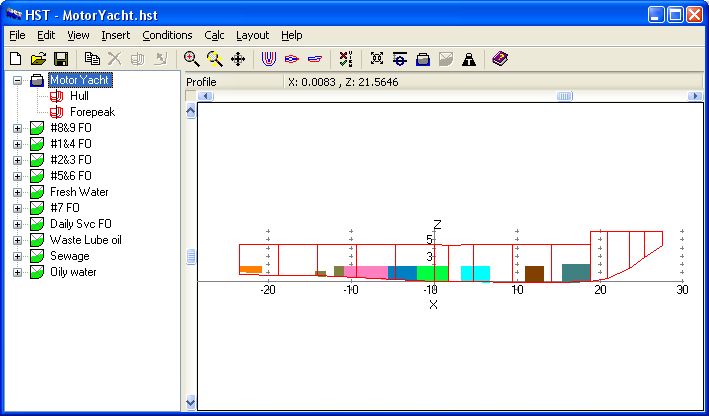
Hydrodynamics
Probabilistic Access Policy: ProToel
Seakeeping: Octopus Office - Seaway
Effects of passing ships on moored ships: ROPES
MoorDyn
- a lumped-mass mooring line model for simulating the dynamics of moorings connected to floating offshore structures.
- accounts for internal axial stiffness and damping forces, weight and buoyancy forces, hydrodynamic forces from Morison's equation (assuming quiescent water so far), and vertical spring-damper forces from contact with the seabed.
